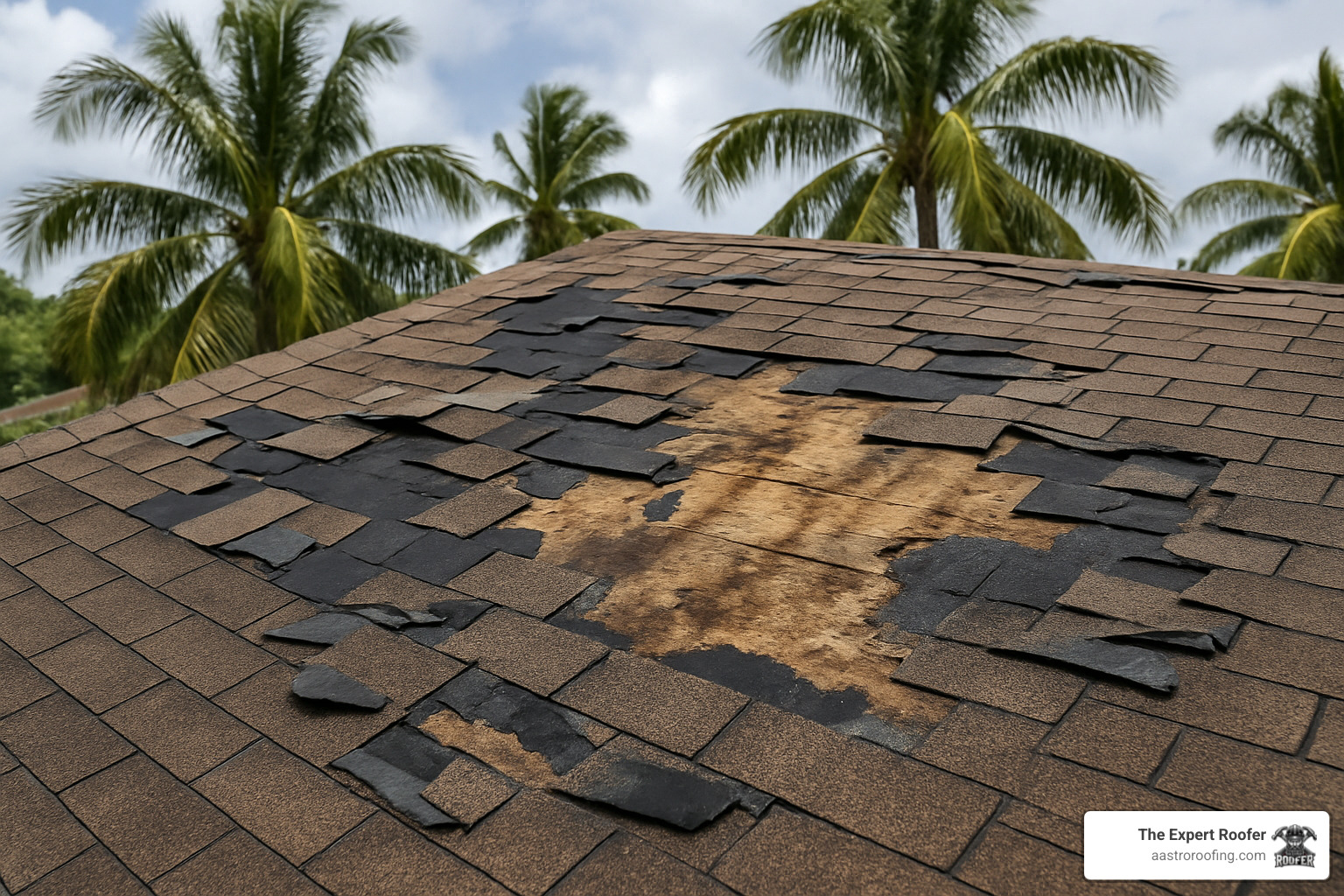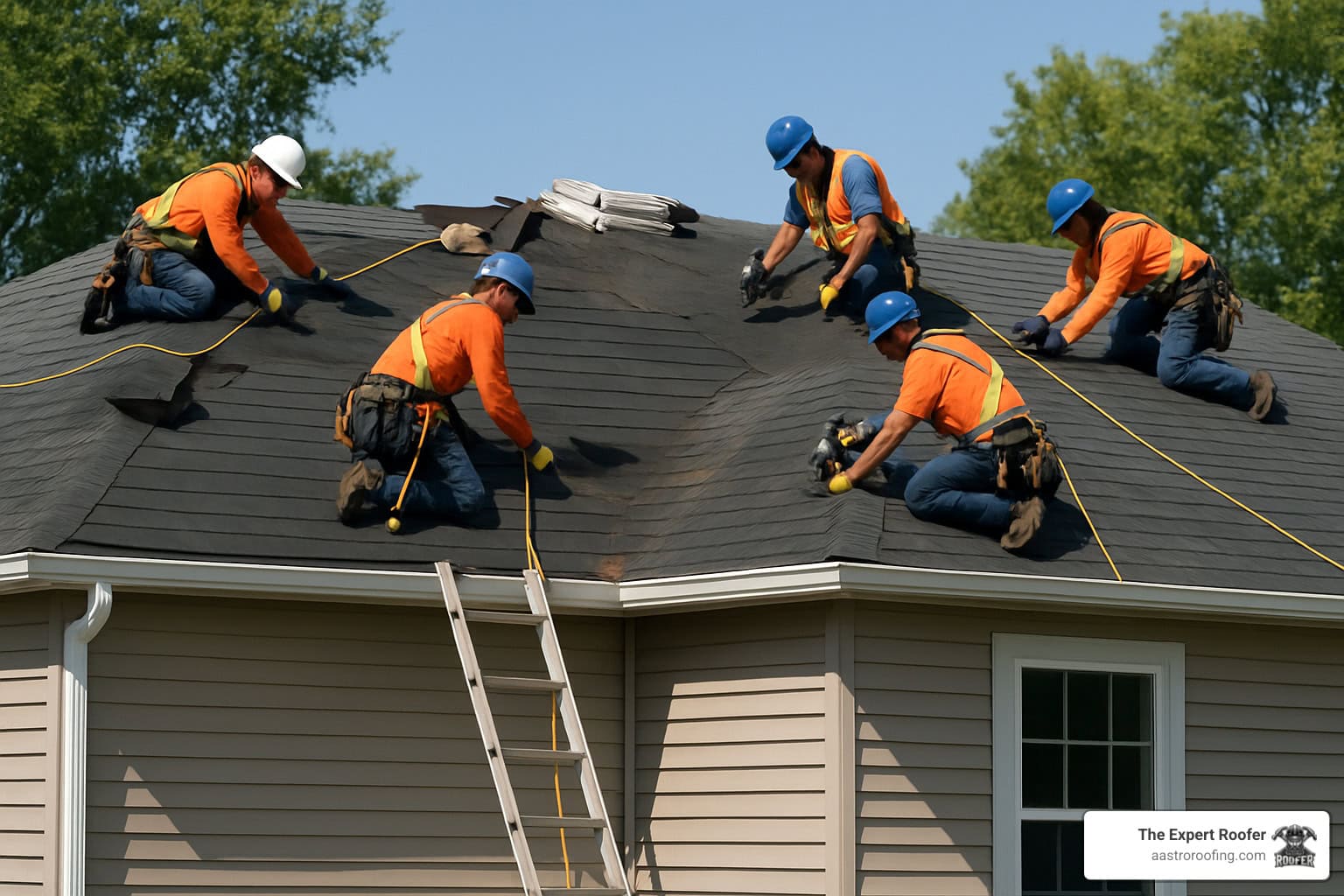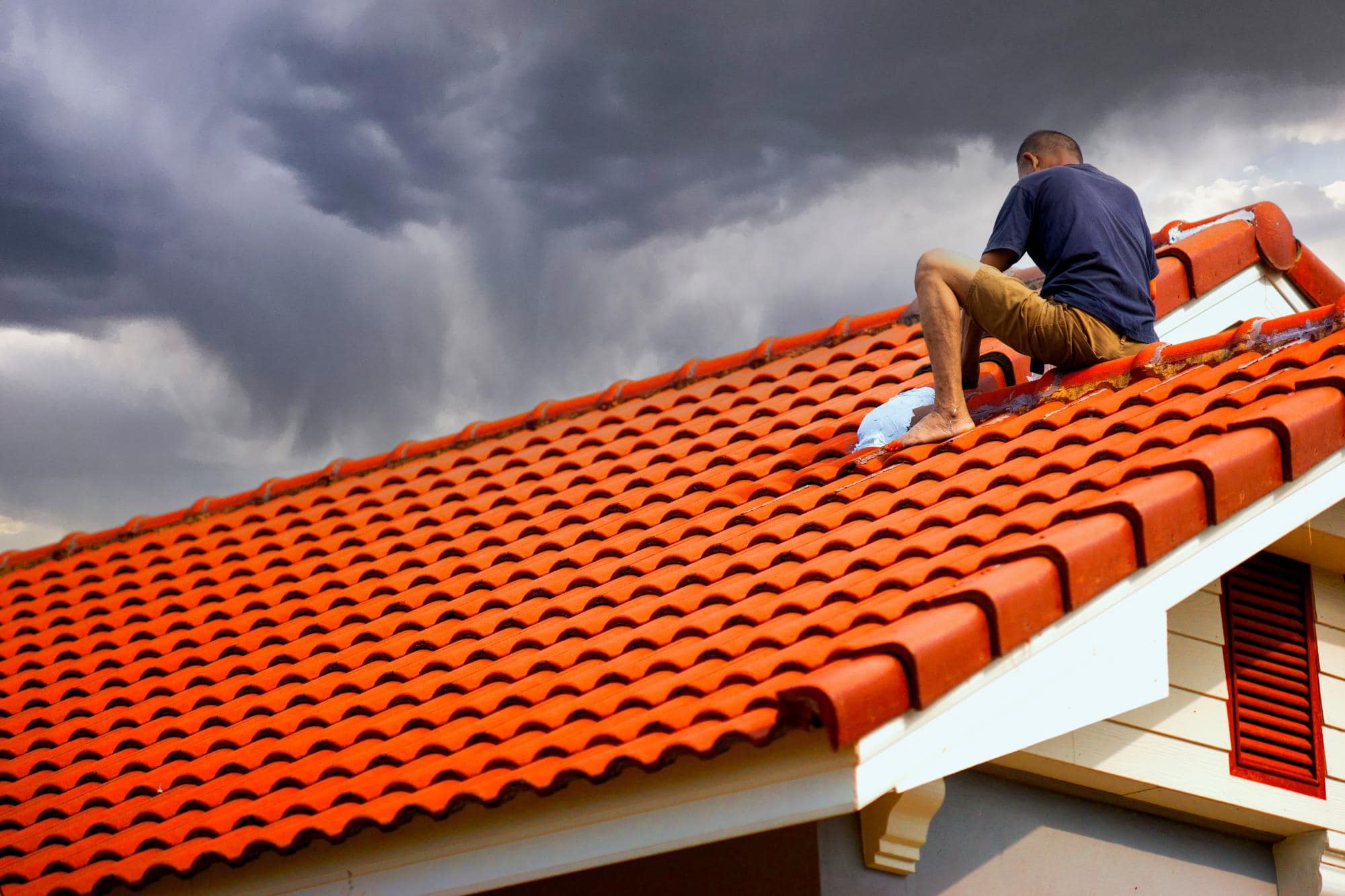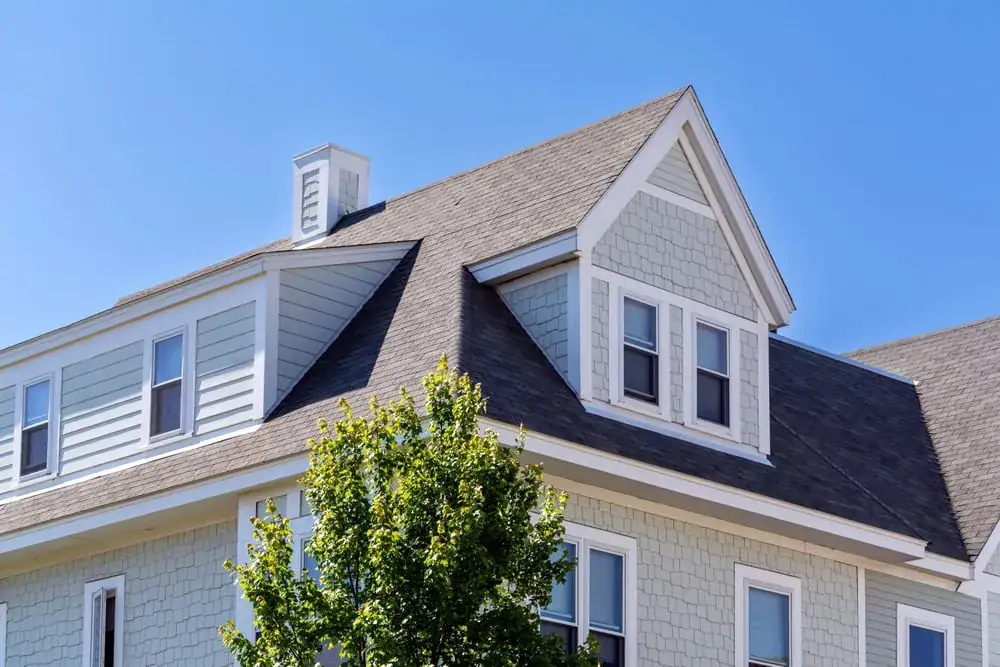Summary:
Visible Exterior Roof Damage Signs
The most obvious signs start with what you can see from the ground or during a safe inspection. Missing, cracked, or curling shingles are clear indicators that your roof’s protective barrier is compromised.
Granule loss shows up as bare spots on asphalt shingles or granules collecting in your gutters. In Florida’s intense sun, this happens faster than in other climates. When shingles lose their granules, they lose their ability to reflect UV rays and regulate temperature.

Shingle Problems That Signal Bigger Issues
Shingle damage rarely happens in isolation. When you spot one problem, others usually follow. Cracked shingles often indicate your roof is reaching the end of its useful life, especially if you’re seeing multiple damaged areas.
Curling edges happen when shingles expand and contract repeatedly due to Florida’s temperature swings. This creates gaps where water can penetrate, leading to more serious problems underneath. If you’re seeing widespread curling, you’re likely looking at replacement rather than repair.
Loose or missing shingles after storms are common in Florida, but they’re also opportunities for water infiltration. Even one missing shingle can allow moisture into your roof deck, where it causes rot and structural damage you can’t see from the ground.
The key is understanding that visible shingle damage often reflects hidden problems. Your roof system includes multiple layers working together. When the outer layer fails, everything underneath becomes vulnerable to Florida’s humidity and frequent rainfall.
Flashing and Gutter Warning Signs
Flashing around chimneys, vents, and roof edges takes a beating in Florida’s weather. When flashing pulls away or develops gaps, water finds its way into places it shouldn’t be. You’ll often see rust stains or water marks near these areas.
Gutters tell their own story about your roof’s condition. Excessive granules in gutters indicate accelerated shingle aging. Gutters pulling away from the house suggest fascia board damage, often caused by water infiltration from roof problems above.
Sagging gutters or visible gaps at joints point to ongoing water issues. In Florida’s heavy rainfall, your gutters work overtime. When they can’t handle the load properly, it usually means water is coming from places it shouldn’t—like through damaged roof areas.
Don’t ignore small metal pieces or flashing materials in your yard after storms. These components create waterproof seals around roof penetrations. When they fail, water damage follows quickly in Florida’s climate. What starts as a small leak can become a major problem within one rainy season.
Interior Signs of Roof Problems
Inside your home, roof problems announce themselves through water stains, musty odors, and temperature irregularities. These interior signs often indicate problems that have been developing for weeks or months.
Water stains on ceilings or walls are obvious red flags, but they don’t always appear directly under the leak source. Water can travel along rafters and beams before dripping into visible areas. In Florida’s humid climate, even small leaks create ideal conditions for mold growth.
When Leaks Become Emergencies
Not all roof leaks require emergency roof repair, but Florida’s weather can turn minor issues into major problems quickly. Active dripping during or after rain demands immediate attention. Even small amounts of water can cause significant damage to insulation, drywall, and electrical systems.
Musty odors often appear before visible water damage. In Florida’s humidity, moisture trapped in your roof system creates perfect conditions for mold and mildew. If you’re noticing persistent odors in upper floors or attic spaces, moisture is likely entering through roof damage.
Temperature changes in specific rooms can indicate roof problems too. If one area of your house feels significantly warmer or cooler, your roof’s insulation barrier might be compromised by water damage. This is especially noticeable in Florida, where your air conditioning works hard to maintain comfortable temperatures.
Peeling paint or wallpaper near the ceiling often results from moisture infiltration through roof damage. The humidity doesn’t just come from visible leaks—it can seep through damaged areas and create problems throughout your home’s envelope.
Attic Inspection Warning Signs
Your attic provides the clearest picture of your roof’s condition. Daylight visible through roof boards means you have gaps that allow both light and water penetration. In Florida’s frequent afternoon storms, these openings become entry points for significant water damage.
Wet insulation loses its effectiveness and creates health hazards. If you’re finding damp or compressed insulation, water is entering your roof system somewhere. Wet insulation also indicates poor ventilation, which accelerates roof aging in Florida’s climate.
Staining on roof decking or rafters shows where water has been entering over time. These stains often appear long before you see interior damage in living spaces. Dark staining usually indicates ongoing moisture problems that require professional attention.
Rust on nails or metal components in your attic signals moisture exposure. In Florida’s humid environment, this rust develops quickly when water enters the roof system. Rusty nails also lose their holding power, which can lead to structural problems during high winds.
Making the Right Decision for Your Roof
Recognizing these warning signs helps you act before small problems become expensive disasters. In Florida’s challenging climate, timing matters more than in other regions. What might be a minor repair elsewhere can quickly escalate into major damage here.
The difference between repair and replacement often comes down to the extent and age of the damage. A professional inspection can help you understand what you’re really dealing with and make informed decisions about your property’s protection.
When you’re ready for an honest assessment of your roof’s condition, we provide free inspections throughout Broward and Palm Beach Counties. Four generations of experience means you get straight answers about what needs attention and what can wait.




